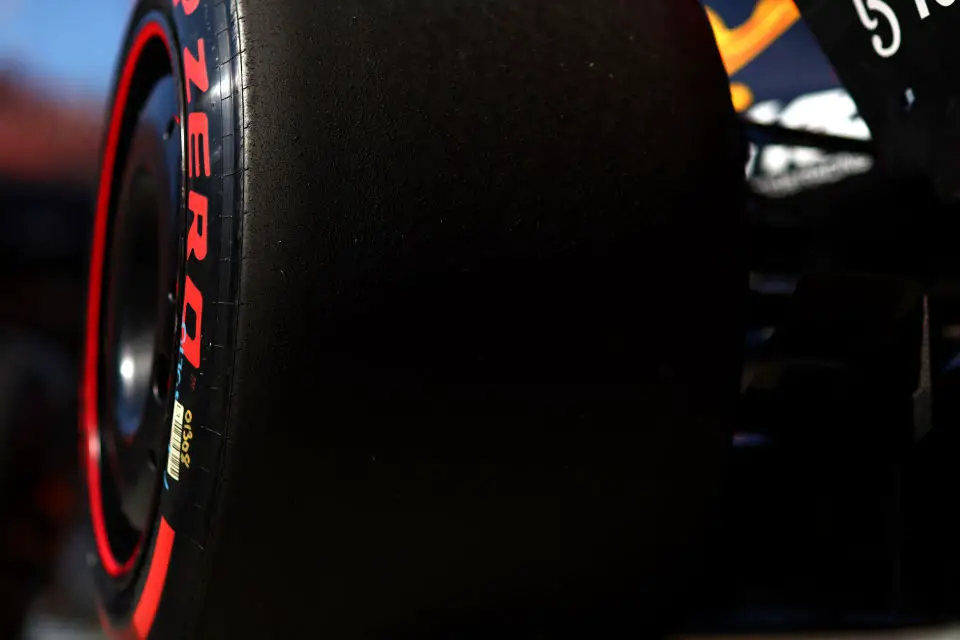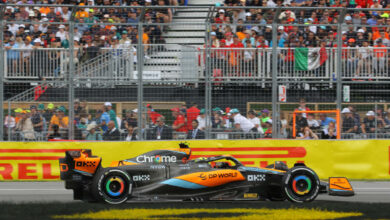Chilling Predictions: F1 Teams Voice Concerns Over Cold Las Vegas GP Conditions
The upcoming Las Vegas Grand Prix in November is raising concerns among Formula 1 teams about cold weather affecting tire performance. With temperatures expected to drop below ten degrees Celsius, teams are wary of the challenges this unprecedented weather could pose.
Key Takeaways:
- Tire Temperature Troubles: F1 teams are apprehensive about the ability to get Pirelli tires to the optimal temperature during the Las Vegas GP, as night-time temperatures in mid-November could fall to around five degrees Celsius. This is especially problematic for Friday’s qualifying and Saturday’s late-night race.
- Insights from the Paddock: Mercedes’ Andrew Shovlin and AlphaTauri’s Jonathan Eddolls have compared the conditions to winter testing scenarios, emphasizing the difficulty in tire management under such cold conditions. Eddolls highlights the similarity to winter tests in Barcelona.
- Differing Perspectives: While most teams express concern, Haas director of engineering Ayao Komatsu shows a preference for colder conditions, though he acknowledges the challenges, particularly for teams with limited pre-event simulation tools.

In a startling revelation for the motorsport community, Formula 1 teams have expressed significant concerns over the Las Vegas Grand Prix, slated for this November. The heart of the issue lies in the expected cold temperatures, which could plummet to sub-ten degrees Celsius, a rare occurrence for a Grand Prix event.
This weather forecast is not just a trivial matter. It poses a serious threat to the teams’ ability to get their Pirelli tires up to the right temperature. Cold tires are not just less effective; they can be a safety hazard, preventing cars from performing at their optimum during crucial phases like the start of qualifying laps.
Andrew Shovlin, Mercedes’ trackside engineering director, shed light on the predicament. “It’ll just depend on exactly how cold it is,” he told Motorsport.com. His concerns were primarily about the tires’ performance in such frigid conditions, which are typically reserved for winter testing. Shovlin elaborated on the potential issues, such as tire graining and the difficulty in getting them “switched on” or heated properly.
Jonathan Eddolls, chief race engineer at AlphaTauri, echoed similar sentiments. He drew parallels between the anticipated conditions in Las Vegas and their winter tests in Barcelona, emphasizing that while the situation isn’t entirely unprecedented, it’s significantly different from the norm in an F1 season.
In contrast, Ayao Komatsu, Haas’s director of engineering, presented a slightly different view. While acknowledging the challenges, Komatsu expressed a preference for colder conditions. However, he also pointed out the limitations faced by his team, particularly in terms of pre-event simulation tools compared to more resource-rich teams like Mercedes.
This scenario sets the stage for a Grand Prix that could be as much about weather strategy as it is about speed and skill. Teams will have to navigate these uncharted waters, balancing the need for performance with the imperative of safety, making the Las Vegas GP a potentially groundbreaking event in the world of Formula 1.


